Building Design

How does the design of a building impact its energy efficiency ?
This text discusses the impact of building design on energy efficiency, focusing on orientation and layout, insulation and airtightness, windows and doors, lighting and electrical systems, and HVAC systems. It highlights that a well-designed building can significantly reduce energy consumption and improve indoor comfort, while a poorly designed one can lead to high energy costs and discomfort for occupants. The text provides various strategies and considerations for each aspect of building design to achieve energy efficiency.

How does ecological design influence the well-being of building occupants ?
Ecological design, also known as sustainable or green design, is a method of architecture and building that focuses on reducing negative environmental impacts while improving occupant comfort and health. This design philosophy significantly affects the well-being of building occupants in various ways, from enhancing indoor air quality to fostering a connection with nature. Some key aspects through which ecological design enhances occupant well-being include: - Healthier Indoor Environment: Ecologically designed buildings often incorporate advanced ventilation systems that ensure the continuous flow of fresh, filtered air. The use of low VOC (Volatile Organic Compounds) materials reduces pollutants that can cause respiratory issues. Strategic placement of windows allows for ample natural light, reducing the need for artificial lighting and its associated energy consumption. Proper insulation and shading devices maintain comfortable temperatures without overreliance on heating and cooling systems. Orienting buildings to maximize solar gain in colder seasons and minimize it in warmer periods contributes to thermal comfort. - Increased Productivity and Comfort: Eco-friendly soundproofing materials can reduce noise pollution, creating a quieter and more focused work environment. Thoughtful layout planning can minimize noise disturbances and improve speech privacy. The use of window shades and tinting can reduce glare from excessive sunlight, ensuring visual comfort for occupants. Strategically placed reflective surfaces can bounce natural light deeper into spaces, reducing the need for bright artificial lighting. - Mental and Emotional Benefits: Incorporating elements of nature such as plants, water features, and natural materials can reduce stress and increase happiness among occupants. Providing views to the outside world, especially of natural settings, has been shown to boost mood and well-being. Ecological designs often include multi-purpose spaces that can be adapted for various activities, contributing to a sense of variety and adaptability. Designs that blur the line between indoor and outdoor spaces encourage a connection to the outdoors and can enhance mental well-being. - Long-Term Sustainability: Integrating solar panels or wind turbines can make buildings self-sufficient in energy, reducing reliance on non-renewable resources. Using durable, eco-friendly construction materials reduces the need for repairs and replacements, saving costs and reducing waste. Low Maintenance Design: Designing buildings to require minimal maintenance work ensures that they remain healthy, safe, and functional over extended periods.

Can you provide examples of successful ecological design projects ?
Ecological design is a concept that focuses on creating structures and spaces that are environmentally friendly, sustainable, and harmonious with their surrounding ecosystems. Here are some examples of successful ecological design projects: 1. The Bullitt Center in Seattle, USA 2. The Green School in Bali, Indonesia 3. The High Line in New York City, USA 4. The Gherkin Building in London, UK 5. The Living Building Challenge in various locations worldwide

Can you explain the concept of a living building in the context of ecological design ?
The text introduces the concept of a "living building" in ecological design, emphasizing sustainable materials, energy efficiency, and water conservation. It outlines key features such as using renewable and non-toxic materials, maximizing natural light and ventilation, and promoting biodiversity through green spaces. Benefits include reduced environmental impact, long-term economic savings, improved health for occupants, and enhanced social interaction. The text concludes that living buildings offer significant advantages for people and the planet, suggesting their increasing importance in future built environments.

How does ecological design impact energy efficiency in buildings ?
Ecological design significantly impacts energy efficiency in buildings through various strategies like passive solar design, advanced insulation, renewable energy sources, energy-efficient appliances, water conservation, and sustainable material choices. These practices reduce energy consumption, lower operational costs, and minimize environmental harm.
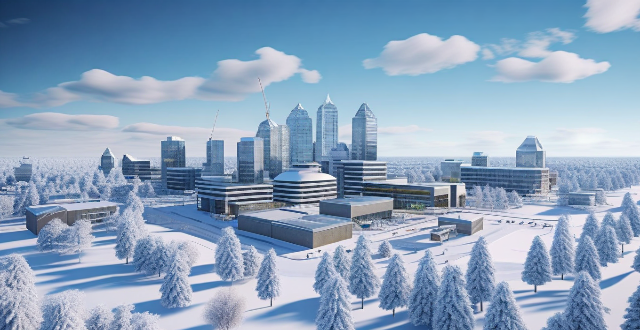
Is ecological design more expensive than traditional design methods, and is it cost-effective in the long term ?
The article explores the cost implications of ecological design compared to traditional design methods. It acknowledges that ecological design, which emphasizes energy efficiency and sustainability, often comes with higher upfront costs due to factors such as more expensive materials and specialized labor requirements. However, it argues that these initial expenses can be offset by long-term benefits like reduced energy and water bills, lower maintenance costs, improved indoor air quality, and increased property value. The article uses an example of an energy-efficient building to illustrate how the cumulative savings from these benefits can outweigh the initial additional costs over time. In conclusion, while acknowledging the higher upfront costs, the article asserts that ecological design is more cost-effective in the long run and represents a wise investment for both homeowners and developers.
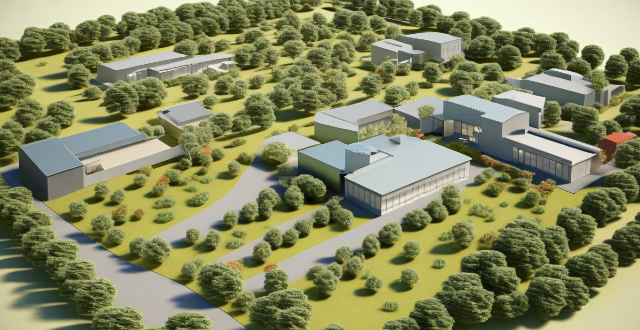
What is ecological design, and why is it important ?
Ecological design is a sustainable approach to architecture and engineering that aims to minimize environmental impact. It promotes the use of renewable energy, sustainable materials, and energy-efficient technologies, leading to reduced carbon footprint and conservation of natural resources. Economic benefits include cost savings, increased property value, and job creation. Socially, it fosters healthier living environments, community engagement, and educational opportunities. Ecological design also adapts to climate change by incorporating resilient infrastructure and water management systems. Finally, it promotes innovation through technological advancements, cross-disciplinary collaboration, and research opportunities.

How do building energy efficiency standards affect the construction industry ?
Building energy efficiency standards have a significant impact on the construction industry by affecting cost implications, design philosophy, regulatory compliance, and market trends. These standards require higher initial costs due to advanced technologies and materials but offer long-term benefits like reduced energy consumption and maintenance costs. They also shift the focus of design towards energy performance and sustainability, leading to integrated design processes and innovative solutions. Compliance with these standards is crucial to avoid penalties and legal issues, while certifications like LEED or WELL can provide a competitive advantage. Finally, building energy efficiency standards influence market trends by driving demand for sustainable construction methods and educating clients about their benefits.

What role does technology play in advancing ecological design ?
The text discusses the role of technology in advancing ecological design, which is an approach to architecture and urban planning that emphasizes the integration of natural systems and processes into the built environment. The author outlines various ways in which technology contributes to ecological design, including data collection and analysis, simulation and modeling, sustainable materials and construction methods, energy efficiency and renewable energy sources, water management and conservation, connectivity and automation, and community engagement and education. Overall, technology plays a crucial role in advancing ecological design by providing tools, data, and methods for understanding and enhancing the relationship between human activity and the natural world.

How do climate zones impact the design of energy-efficient buildings ?
Climate zones play a crucial role in the design of energy-efficient buildings, impacting heating and cooling needs, insulation and ventilation, orientation and shading, glazing and daylighting, and roofing and water management. By taking these factors into account, architects and engineers can create buildings that are both comfortable and energy-efficient regardless of their location within different climate zones.
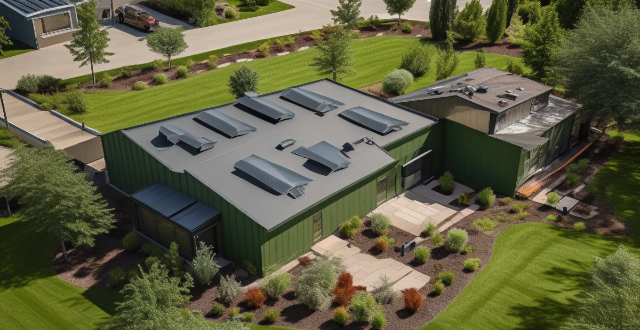
What is the relationship between ecological design and green roofs/walls ?
Ecological design emphasizes sustainability and harmony with the environment, incorporating green roofs/walls for energy efficiency, stormwater management, habitat creation, air quality improvement, and aesthetic enhancement. These features require careful consideration of climate, building structure, water management, maintenance, energy efficiency, and habitat connectivity to ensure their success and alignment with ecological design principles.
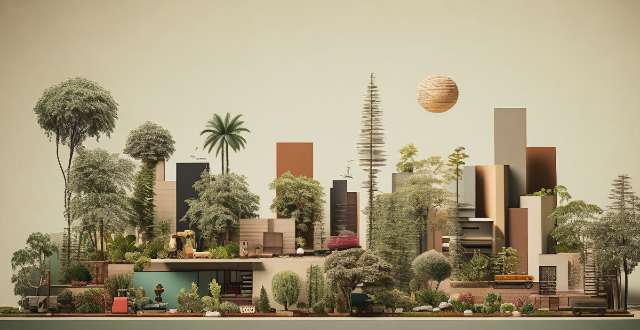
What are the educational requirements for professionals interested in ecological design ?
Ecological design requires professionals to have a combination of skills and knowledge in various fields. A bachelor's degree is typically required for entry-level positions, with majors such as environmental science, architecture, landscape architecture, and urban planning. Many professionals also pursue a master's degree or certifications to gain specialized knowledge and advance their careers. Certifications include LEED Accredited Professional, Living Building Challenge Certified Professional, American Society of Landscape Architects Certified Professional, and National Council of Interior Design Qualifications Certified Professional Interior Designer.

How have building energy efficiency standards evolved over time ?
The evolution of building energy efficiency standards has been significant over the years, with a focus on reducing energy consumption and environmental impact. Early beginnings saw little consideration for energy consumption, leading to high utility bills and greenhouse gas emissions. The rise of energy conservation in the 1970s led to the development of the first building energy efficiency standards, focusing on measures such as improved insulation and efficient heating and cooling systems. The advent of green buildings in the 1990s brought new standards that minimized environmental impact through the use of renewable energy sources and sustainable materials. Technology has played a significant role in improving energy efficiency, with advances such as smart thermostats and LED lighting. Looking to the future, there is likely to be a greater emphasis on reducing energy consumption in buildings, leading to stricter standards and the development of new technologies. Overall, building energy efficiency standards have evolved to become an essential part of modern building design and construction.

What is green building and why is it important for the construction industry ?
Green building is an approach to design, construction, operation, and maintenance of buildings that aims to minimize environmental impact and resource consumption throughout a building's lifecycle. It focuses on sustainability, energy efficiency, water conservation, materials selection, and indoor environmental quality. The importance of green building in the construction industry stems from environmental concerns, economic benefits, and social responsibility. Green buildings reduce carbon footprint, conserve resources, preserve biodiversity, save energy costs, have higher asset values, and promote healthier living conditions. They also set community standards for sustainable practices and help companies stay ahead of compliance requirements. Green building drives innovation in materials science, design techniques, and construction technology. Overall, green building represents a fundamental shift towards more sustainable and responsible practices within the construction industry.

What are the key factors in designing a safe and stable building structure ?
The text provides a comprehensive overview of the key factors that must be considered when designing a safe and stable building structure. It emphasizes the importance of site selection and analysis, foundation design, structural system selection, material selection, and construction quality control in ensuring the well-being of inhabitants and protecting against natural disasters. The text also highlights the need for proper workmanship, inspections, testing, and maintenance to maintain the integrity of the structure over time. Overall, the text serves as a valuable resource for architects, engineers, and builders involved in the design and construction of safe and stable buildings.

What are the key factors to consider when planning an energy-efficient building project ?
The text provides a summary of key factors that should be considered when planning an energy-efficient building project. These factors include site selection and orientation, building design and construction, and energy sources and consumption. The location and orientation of the building on the site can have a significant impact on its energy efficiency, as well as the design and construction of the building itself. Consideration should also be given to the sources of energy used by the building and how that energy is consumed. By considering these key factors during the planning stages of an energy-efficient building project, it is possible to create a building that is comfortable, functional, environmentally responsible, and economically sustainable over its lifetime.

How can architects and designers incorporate building energy efficiency standards into their work ?
Incorporating Building Energy Efficiency Standards into Architectural and Design Work: - Understanding Energy Efficiency Standards: Research current standards, analyze local climate data. - Design Strategies for Energy Efficiency: Orientation and site layout, insulation and envelope performance, HVAC, lighting and electrical systems, water efficiency. - Material Selection: Sustainable materials, recycled content. - Technology Integration: Building automation systems, solar technology. - Collaboration and Communication: Team collaboration, client education. - Post-Occupancy Evaluation: Monitor performance, feedback loop.

What are the current building energy efficiency standards ?
The text discusses building energy efficiency standards, which are regulations and guidelines designed to reduce energy consumption. These standards promote sustainable development, reduce greenhouse gas emissions, and improve indoor air quality. The text lists seven key areas for improving energy efficiency: insulation and air tightness, heating, ventilation, and air conditioning systems, lighting systems, renewable energy sources, water efficiency, building materials and construction practices, and energy management and monitoring. Each area includes specific strategies and technologies that can be employed to increase energy efficiency.

In what ways do building codes contribute to overall structural safety ?
Building codes are regulations that ensure the design, construction, and maintenance of buildings adhere to certain standards, promoting structural safety. They prevent the use of substandard materials and shoddy workmanship, require buildings to withstand environmental factors, mandate fire-resistant materials and safety features, address accessibility and egress issues, and encourage energy efficiency. Overall, building codes contribute significantly to creating safer, more resilient structures.
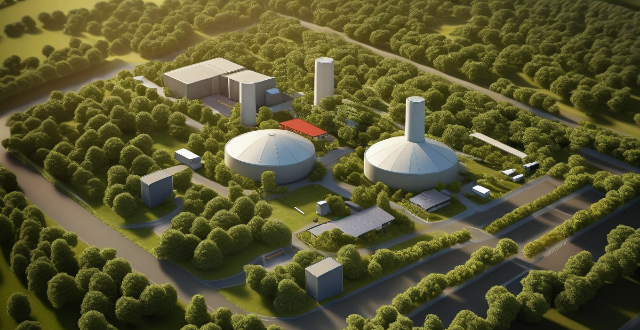
How do building energy efficiency standards impact the environment ?
**Summary:** Building energy efficiency standards positively impact the environment by reducing greenhouse gas emissions, conserving natural resources, enhancing air quality, and promoting energy innovation. These standards lead to more energy-efficient buildings, reduced dependence on fossil fuels, cleaner air, and advancements in sustainable technologies.

How does ecological design contribute to biodiversity and conservation efforts ?
Ecological design is a crucial approach to enhancing biodiversity and supporting conservation efforts. It integrates principles of ecology and sustainability into the built environment, aiming to minimize negative impacts on natural ecosystems while promoting their health and resilience. Ecological design contributes to these vital efforts by minimizing habitat destruction, promoting ecosystem services, enhancing connectivity, supporting conservation efforts, and implementing best practices. By integrating ecological principles into the built environment, we can create spaces that coexist harmoniously with nature, contributing to a future where both humanity and wildlife thrive.
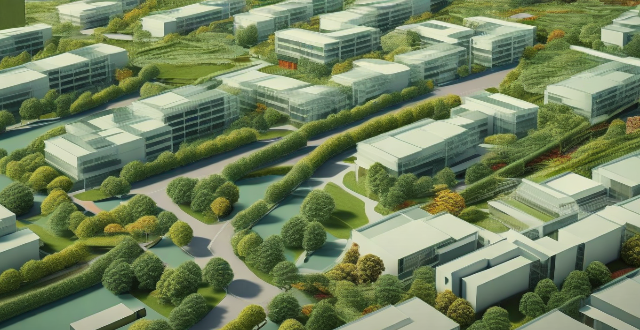
Are there any trends in celebrity mansion design that have emerged in recent years ?
The text discusses the latest trends in celebrity mansion design, focusing on four main areas: sustainability, technology integration, personalization, and experiential living. It highlights the use of green building practices such as solar panels and rainwater harvesting systems, energy-efficient technologies like smart HVAC systems, and eco-friendly materials. The integration of smart home features, security innovations, and personalized design elements is also explored. Additionally, it touches upon the trend of creating spaces for health and wellness activities and entertainment facilities within these luxurious residences. Overall, the article provides insight into how celebrities are embracing sustainable practices while enjoying personalized experiences through technology and unique architectural styles.

Are there any significant changes to the design of the new MacBook Pro ?
The new MacBook Pro has a slim and lightweight design, larger display, Touch Bar, improved speakers and camera, and more ports.

What are the challenges faced by architects and designers when implementing ecological design ?
Ecological design is a sustainable approach to architecture and interior design that aims to minimize the negative impact on the environment. However, implementing ecological design can be challenging for architects and designers due to various factors such as limited availability of sustainable materials, higher costs, lack of client education, regulatory challenges, and technological limitations. To overcome these challenges, architects and designers must educate their clients about the benefits of sustainable design, collaborate with other professionals in the field, navigate complex regulatory requirements, and stay up-to-date on new technologies and materials. By addressing these challenges through education, collaboration, and innovation, architects and designers can create more sustainable buildings and spaces for future generations.

What materials are commonly used in ecological design, and why ?
This article discusses materials used in ecological design, including recycled and reclaimed materials such as recycled metals, reclaimed wood, and glass; sustainable materials like bamboo, cork, and linoleum; and low-impact materials such as concrete, insulation, and sheep's wool. It emphasizes that ecological design prioritizes materials with minimal environmental impact throughout their life cycle.

What are the benefits of applying educational psychology in curriculum design ?
The application of educational psychology principles in curriculum design can significantly improve student learning outcomes, promote their well-being, support teacher effectiveness, address diversity and inclusion, and align with modern educational goals. This approach enhances cognitive development, motivation, adaptive learning strategies, reduces anxiety, increases self-esteem, develops social skills, informs instructional decisions, encourages professional growth, aids classroom management, integrates cultural sensitivity, addresses special education needs, differentiates instruction, prepares students for future challenges, fosters lifelong learning, and effectively uses technology. Overall, this holistic approach to curriculum design benefits both students and educators, preparing learners for success in the 21st century.

What are some popular trends in iPhone wallpaper design ?
The text discusses the popular trends in iPhone wallpaper design. The author lists seven different types of designs, including minimalism, nature, abstract art, gradients, retro and nostalgia, pop culture, and personalization. Each type is described briefly with its characteristics and appeal. The first trend is minimalism, which features simple lines and muted colors to create a sense of tranquility. Nature-themed wallpapers are also popular, ranging from landscapes to close-ups of flowers or animals. Abstract art is another trend that adds creativity and individuality to devices. Gradient wallpapers have become increasingly popular, featuring smooth transitions between colors. Retro and nostalgic wallpapers evoke feelings of warmth and familiarity. Pop culture-inspired wallpapers show off interests and personality. Finally, personalized wallpapers feature names, initials, quotes, or other personal touches. In conclusion, there are many popular trends in iPhone wallpaper design. Whether you prefer minimalism, nature, abstract art, gradients, retro styles, pop culture icons, or personalized designs, there is sure to be a trend that suits your taste and style.

How have advancements in materials science impacted sports equipment design ?
Advancements in materials science have significantly impacted sports equipment design, improving durability, performance, safety, comfort, and customization. Examples include carbon fiber bats, advanced composite tennis racquets, titanium golf clubs, aerodynamic cycling helmets, shock-absorbing running shoes, breathable athletic apparel, customized orthotics, and personalized mouthguards. These innovations not only enhance the athletes' performance but also reduce waste, making it an environmentally friendly option.

How has the design of CHEVs evolved over the past few years ?
Over the past few years, Chevrolet (CHEVs) has made significant strides in the design of its vehicles, reflecting advancements in technology, shifts in customer preferences, and an increased focus on sustainability. Key changes include a sleek and modern exterior, advanced technology features such as touchscreen infotainment systems and smartphone integration, eco-friendly design principles like lightweight materials and hybrid or electric powertrains, comfortable interiors with ergonomic seating and quality materials, and safety features including airbags, electronic stability control, and lane departure warning. As CHEVs continue to push the boundaries of automotive design while prioritizing the needs and safety of their customers, it will be exciting to see how they innovate and adapt in the future.
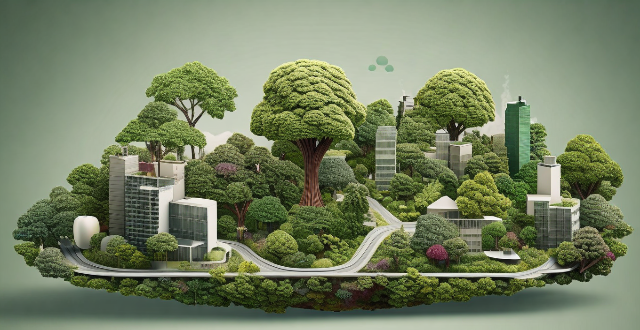
How can communities benefit from incorporating ecological design into their development plans ?
Incorporating ecological design into community development plans can enhance environmental sustainability, improve public health, bring economic benefits, and strengthen community cohesion.